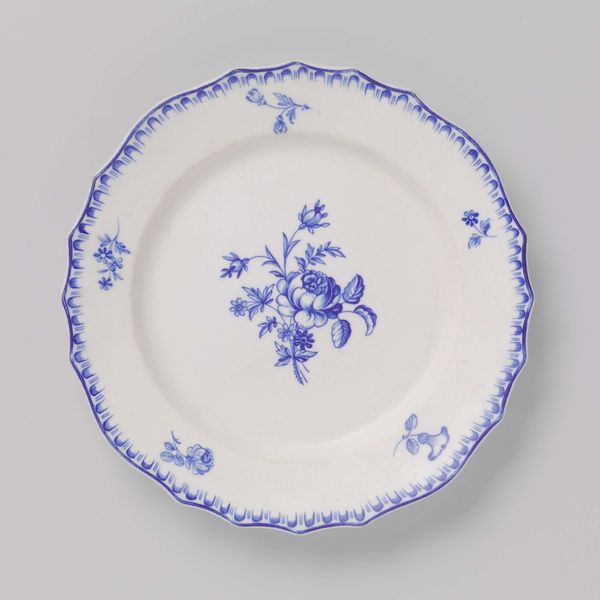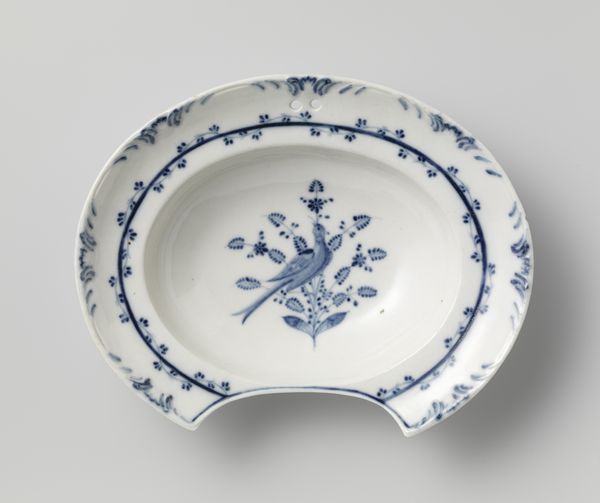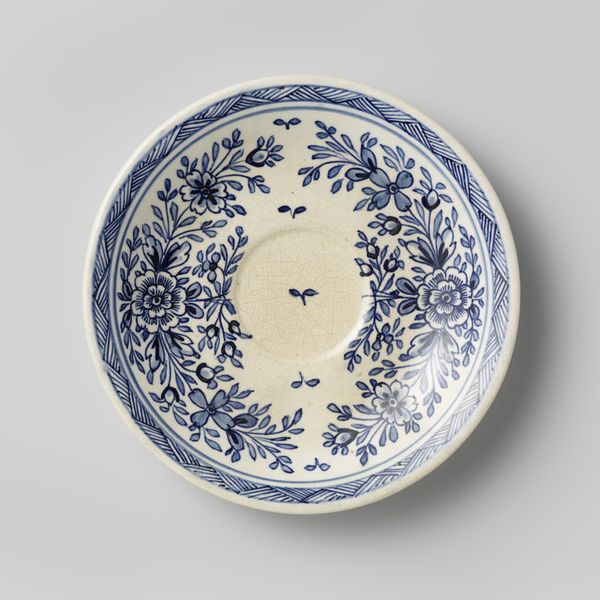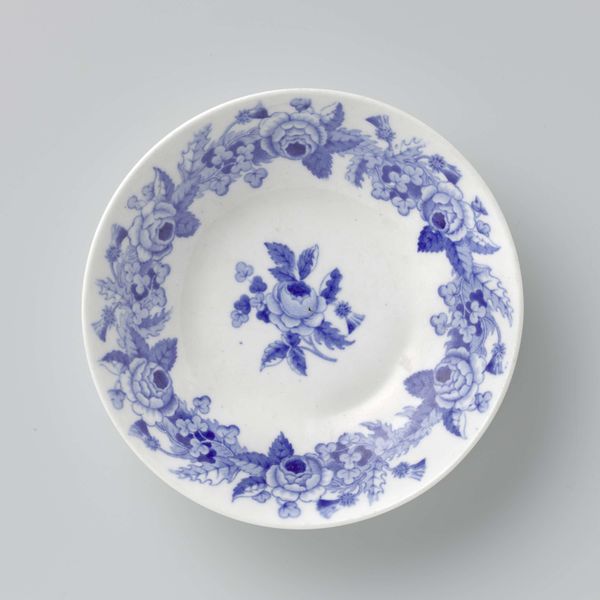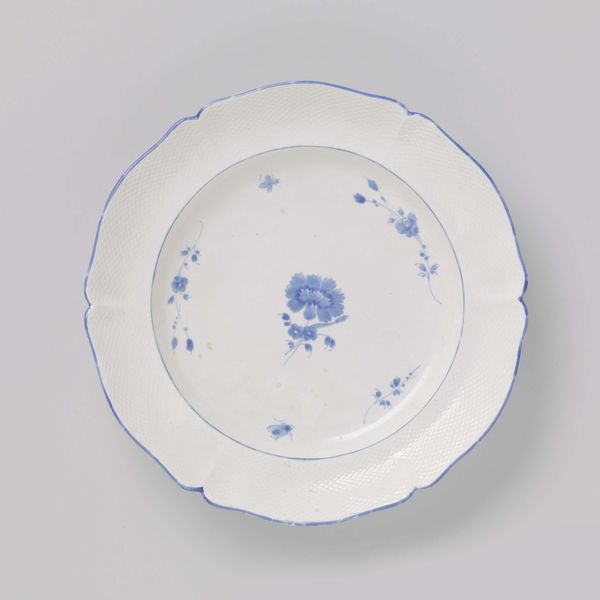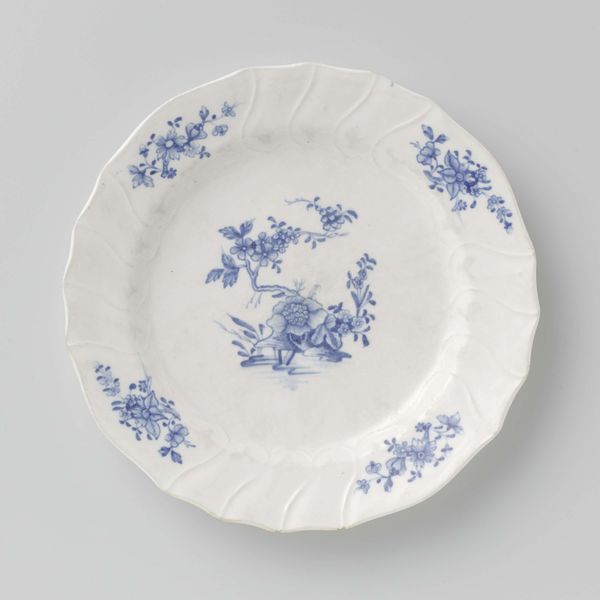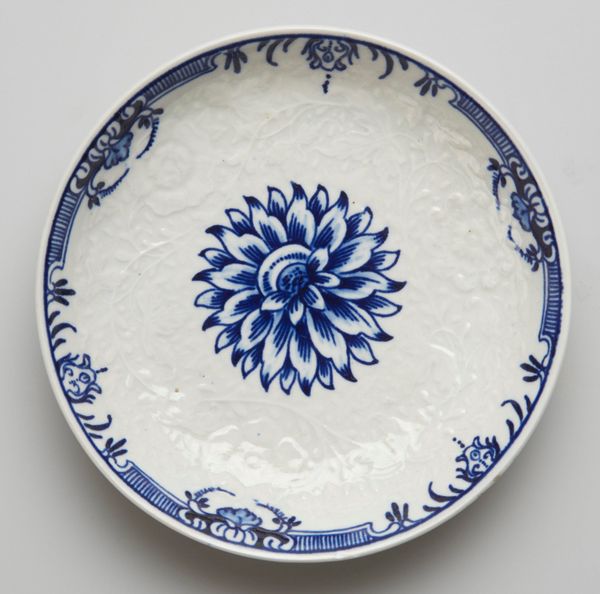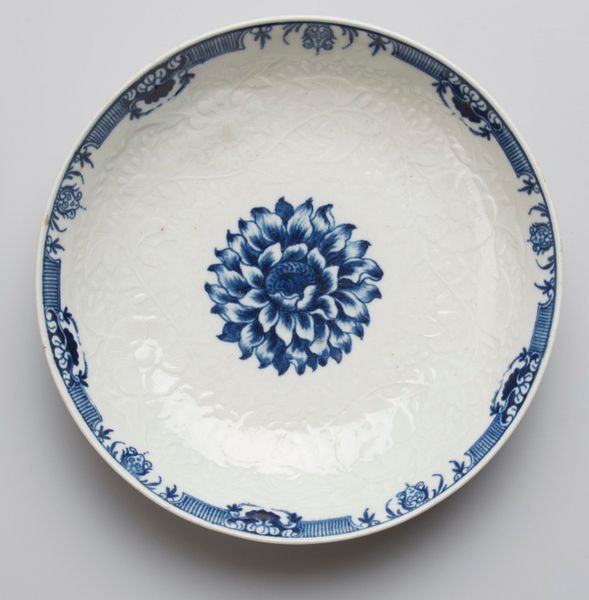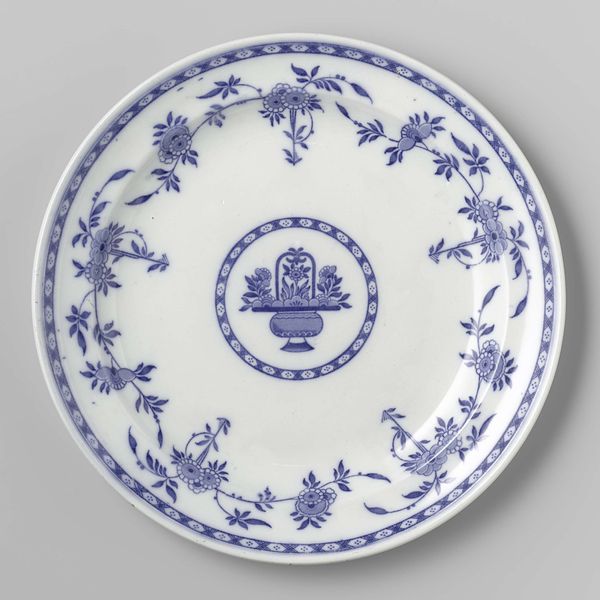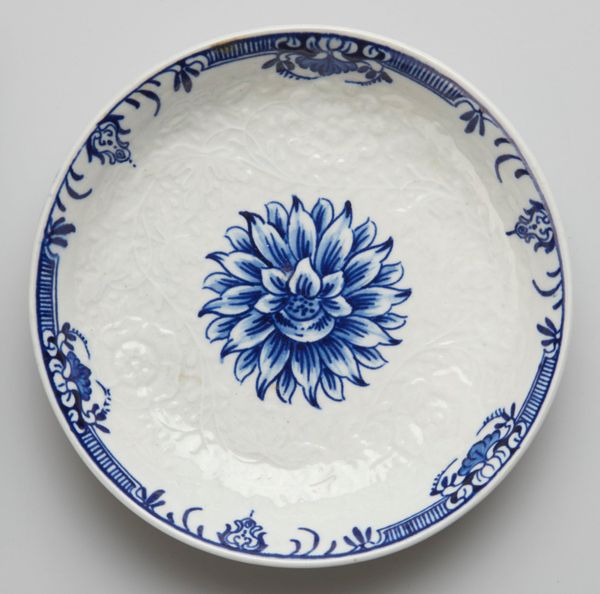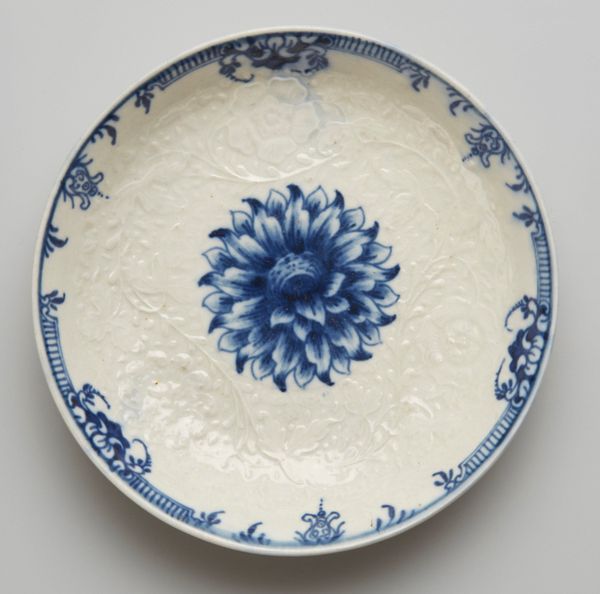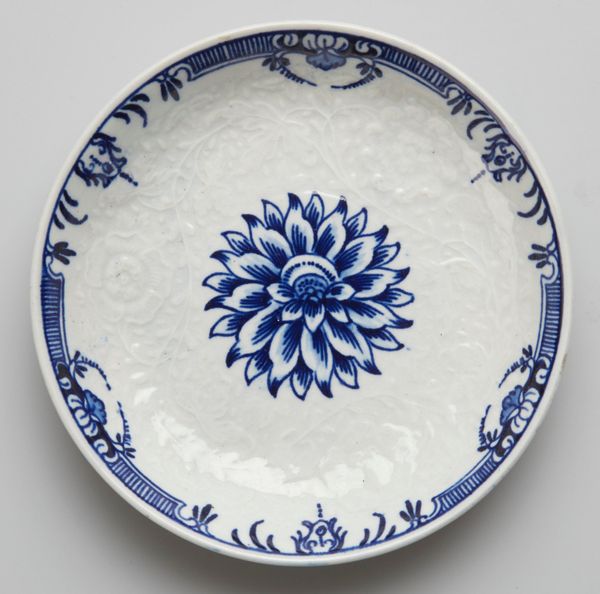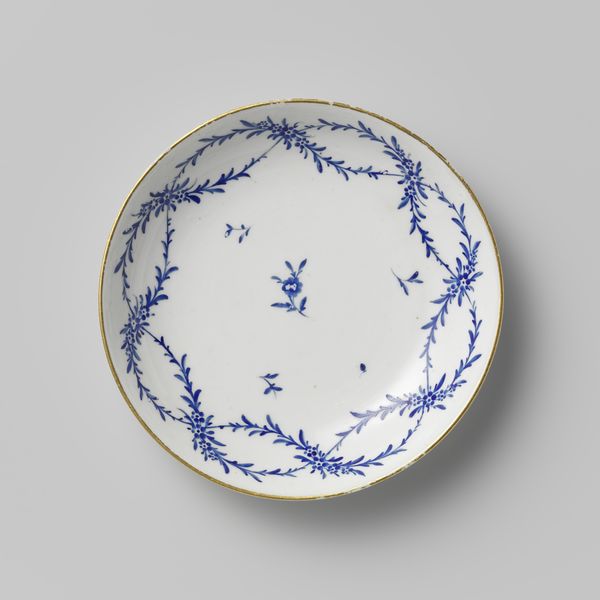
ceramic, porcelain
#
ceramic
#
porcelain
#
orientalism
#
ceramic
Dimensions: 1-9/16 x 9-5/16 x 9-5/16 in. (4.0 x 23.7 x 23.7 cm)
Copyright: Public Domain
Curator: Here we have a "Plate," made around 1800. The anonymous creator worked with porcelain and embraced elements of what we now call Orientalism. What are your initial thoughts? Editor: My immediate impression is one of quiet elegance. The cobalt blue decoration is so spare against the pristine white ground. A delicate equilibrium, almost austere. Curator: Indeed. The very restraint speaks volumes, especially within the context of burgeoning trade with the East. These objects were part of a craze, mirroring the desires of Europeans in relation to Eastern culture. This craze was both acquisitive and representational, wasn’t it? Editor: Precisely! The adoption of supposed “oriental” motifs wasn't merely aesthetic, but performative. Owning and displaying such pieces reinforced social hierarchies, projecting sophistication and global awareness. The placement in the dining room becomes a potent cultural statement. Curator: It also invites examination of the construction of otherness, the projection of idealized visions. It seems a highly sanitized, decorative echo of reality. It brings to mind a simplification in which every element reinforces this projection. What could have been reality reduced to design. Editor: Good point. And there’s that central image—the bouquet in what appears to be a classical basket. Consider how this merges both Western and perceived Eastern design. Curator: Notice how the painter balances form and space to maximize the effect, drawing attention to certain visual features. It would suggest a sophisticated level of craft in the ceramic composition and design transfer. Editor: It reveals a fascinating moment when objects become carriers of cultural exchange—albeit often unequal. Porcelain, once an exotic material, becomes commonplace and subtly charged in parlors across the world. Curator: To bring it back to formalism for a moment, the circular nature is reinforced by both rings, creating what might appear to be several "worlds". Each band with an emphasis. Editor: It truly does hold an important place, providing a window into both individual aesthetics and larger societal structures of that time. Curator: Thank you. That helps me look again at the cultural dynamics between object, individual, and societal structure during this period of exchange and reflection on design and class dynamics.
Comments
minneapolisinstituteofart almost 2 years ago
⋮
In the early 1800s, a visitor to the Providence Parlor (now in gallery 335) might have eaten dinner off this plate. It was handed down by descendants of the owners of the house, John and William Russell, who were prominent Rhode Island importers and exporters. Made by Chinese artists for European and American customers, it was the type of expensive imported item that such wealthy merchants would put before their guests. The parlor was installed in Mia in 1923, and the plate followed seventy-five years later.
Join the conversation
Join millions of artists and users on Artera today and experience the ultimate creative platform.

